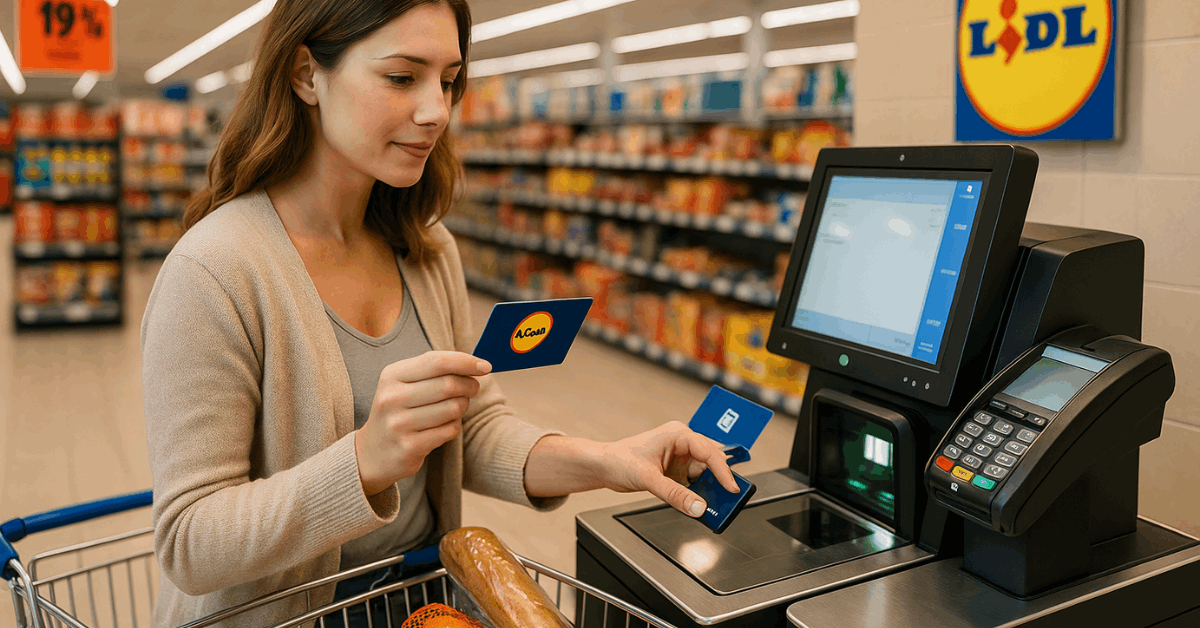Shopping smart is all about knowing where and how to find value. These top discount grocery shopping tips show you simple ways to cut costs without sacrificing quality.
Lidl offers plenty of methods to reduce your grocery bill if you know what to look for. Follow these tips to keep more cash in your pocket.
About the Company
Knowing the store's background helps you understand its pricing approach. Lidl has built its reputation around efficiency and savings.

A Brief History of Lidl
Lidl was founded in Germany in the 1930s and began expanding across Europe in the 1970s.
It later entered the UK and US grocery markets with a strategy centered on streamlined operations.
The company maintains lower prices by offering a limited selection of high-demand products. Its stores are structured for operational efficiency and cost control.
Why Lidl Stands Out in Discount Retail?
The company focuses on private-label goods to manage supplier costs. It also reduces in-store features and staffing to lower operational expenses.
This model is structured to minimize spending across the supply chain. These strategies support the company's low-price positioning.
Know When to Shop
Timing affects how much you save. Plan your trips based on restocking and markdown times.
- Shop early in the morning when shelves are freshly stocked and markdowns are added.
- Midweek days often feature lower foot traffic and better availability.
- End-of-day shopping may reveal final clearance items.
- Avoid weekend peaks when deals go fast.
Buying at the right hour helps you snag fresh items and discounted stock. These small habits can reduce your weekly grocery expenses.
Understand Weekly Offers
You can stretch your money further by understanding store promotions. Weekly deals are refreshed regularly.
- Digital flyers list current discounts on food and household items.
- Seasonal events often bundle products at reduced prices.
- Highlighted sections at entrances promote the best deals.
- Subscribe to store alerts to track incoming promotions.
Reading the flyer before going in helps you make better choices. You’ll plan meals based on available discounts.
Use the Store App for Discounts
The mobile app helps unlock more savings. It's free and user-friendly.

- Register your account and activate coupons weekly.
- Scan your app during checkout to apply discounts.
- Collect rewards over time that convert into money-off vouchers.
- Track purchases and offers in one place.
The app is one of the easiest ways to automate savings. You’ll avoid missing out on limited-time deals.
Shop the Middle Aisle Carefully
The center of the store holds rotating special buys. These change weekly and cover non-food essentials.
- Find limited-run deals on kitchenware, tools, toys, and clothing.
- Inventory is updated every Thursday.
- Most offers are cheaper than online or other retail stores.
- Stock is limited, so shop early for the best selection.
Take a quick pass through the middle section every visit. You’ll find high-value items without stretching your budget.
Try the Private-Label Brands
In-house brands are a core feature of discount supermarkets. They offer real savings without sacrificing quality.
- Most products are 20%–40% cheaper than name brands.
- Popular items include dairy, frozen goods, and baked products.
- Quality is often comparable due to shared manufacturers.
- Many items are customer-rated and widely used.
Choosing private-label food and goods adds up to big savings. It’s a practical switch that fits most budgets.
Spot the Discount Stickers
You can cut prices even further by paying attention to in-store markdowns. These stickers are updated throughout the day.
- Yellow stickers often show 30%–50% off nearing-expiry items.
- Check meat, deli, and produce sections first.
- Use or freeze items soon after purchase to avoid waste.
- Visit during the afternoon for more stickered items.
Buying discounted items doesn’t mean compromising. Just plan when to eat or store them.
Always Use a List
Lists stop you from buying what you don’t need. They help you stay focused.
- Review weekly deals first, then build your list.
- Write down meals for the week to reduce guesswork.
- Avoid impulse buys by sticking to your preplanned items.
- Use your phone or a small notebook for convenience.
When you use a list, your basket becomes more intentional. This is one of the easiest habits to build for long-term savings.
Set a Strict Grocery Budget
Budgeting helps you stay in control. Decide before entering how much you’re willing to spend.
- Break your budget into categories: produce, snacks, meat, etc.
- Use cash or prepaid cards to avoid overspending.
- Compare your receipt total with your plan after shopping.
- Track your grocery expenses weekly or monthly.
A budget forces you to prioritize and get the most value. Even small adjustments make a big difference.
Buy Smart in Best Value Categories
Certain product types offer better deals. Know where to get the most for your money.
- Fresh bakery items are low-priced and baked daily.
- Frozen vegetables and meals provide convenience and shelf life.
- Pantry staples like pasta, rice, and canned goods are affordable.
- Look for store-brand cleaning supplies and paper products.
When you recognize value categories, you can focus your spending. These choices add up every trip.
Avoid Common Overspending Traps
Stores are designed to encourage spending. Being aware helps you dodge extra costs.
- Skip endcap items unless they’re on your list.
- Don’t shop hungry to avoid impulse snacks.
- Watch for "deal" tags that offer little real savings.
- Stick to the outer aisles where essentials are found.
You stay in control when you’re conscious of traps. Plan ahead and ignore distractions.
Bring Your Own Bags
Save small amounts regularly with reusable bags. These savings accumulate over time.
- Avoid paying 10–30 cents per plastic bag.
- Carry foldable bags for convenience.
- Help reduce environmental impact.
- Store bags in your car or by the door to remember.
It’s a habit that’s good for your wallet and the planet. One-time effort, long-term benefit.
Engage with Community Forums
Online groups and forums offer shared advice. You get better insight from real shoppers.
- Learn about regional markdown trends.
- See reviews of new or seasonal products.
- Share tips and hacks with fellow users.
- Ask questions and get answers from regulars.
Being part of a community adds ideas. It keeps you informed and ready for upcoming discounts.
Bulk Buy with a Plan
Buying in bulk helps, but only if you do it wisely. Look for items that store well.
- Stock up on dry goods like beans, flour, and cereals.
- Purchase family packs of meat and portion into freezer bags.
- Avoid bulk perishable items unless heavily discounted.
- Always check unit pricing to confirm savings.
You get more value when you plan storage and usage. Don’t buy more than you can manage.
Explore International Finds
You’ll often find surprise value in global sections. These are great for trying new dishes affordably.
- Look for European snacks, sauces, and frozen specialties.
- Prices tend to be lower than international markets.
- Often featured during special theme weeks.
- Try small quantities first to test quality and taste.
This section adds variety to meals. It’s a way to discover value alternatives to your usual buys.
Final Tips at the Checkout
You can save even during checkout. Pay attention to the final steps.
- Review your receipt for pricing errors.
- Use digital coupons again if needed.
- Choose self-checkout to skip upselling questions.
- Ask for paper receipts to track spending.
This is your last chance to check that your money was well spent. Don’t rush through it.
Smart Shopping Pays Off
It doesn’t take complex tricks to cut grocery costs. It takes habits, consistency, and a little planning.
Using your list, app, and budget every visit reinforces the value of these top discount grocery shopping tips. Take control of your grocery bill by applying these smart, simple steps consistently.









